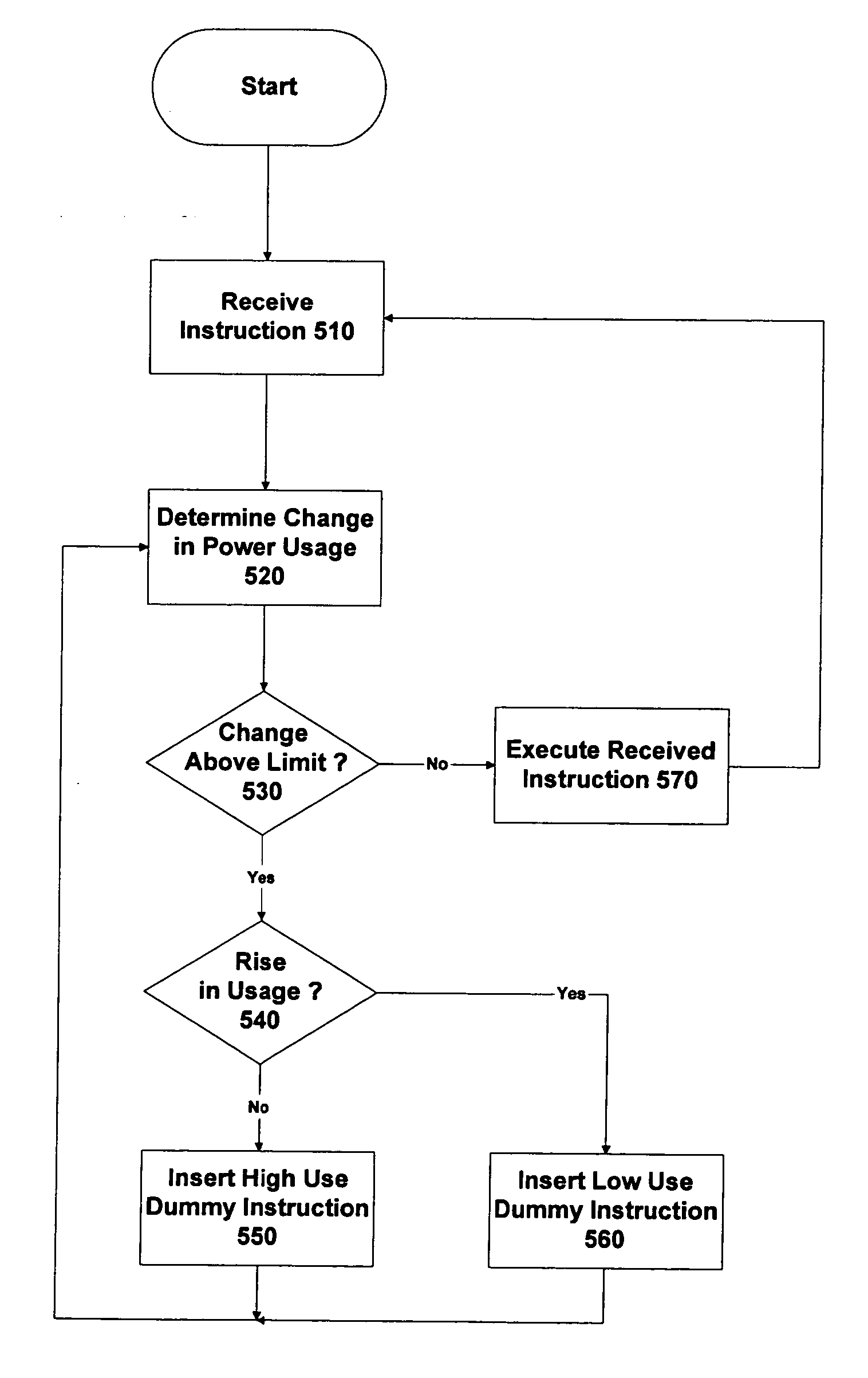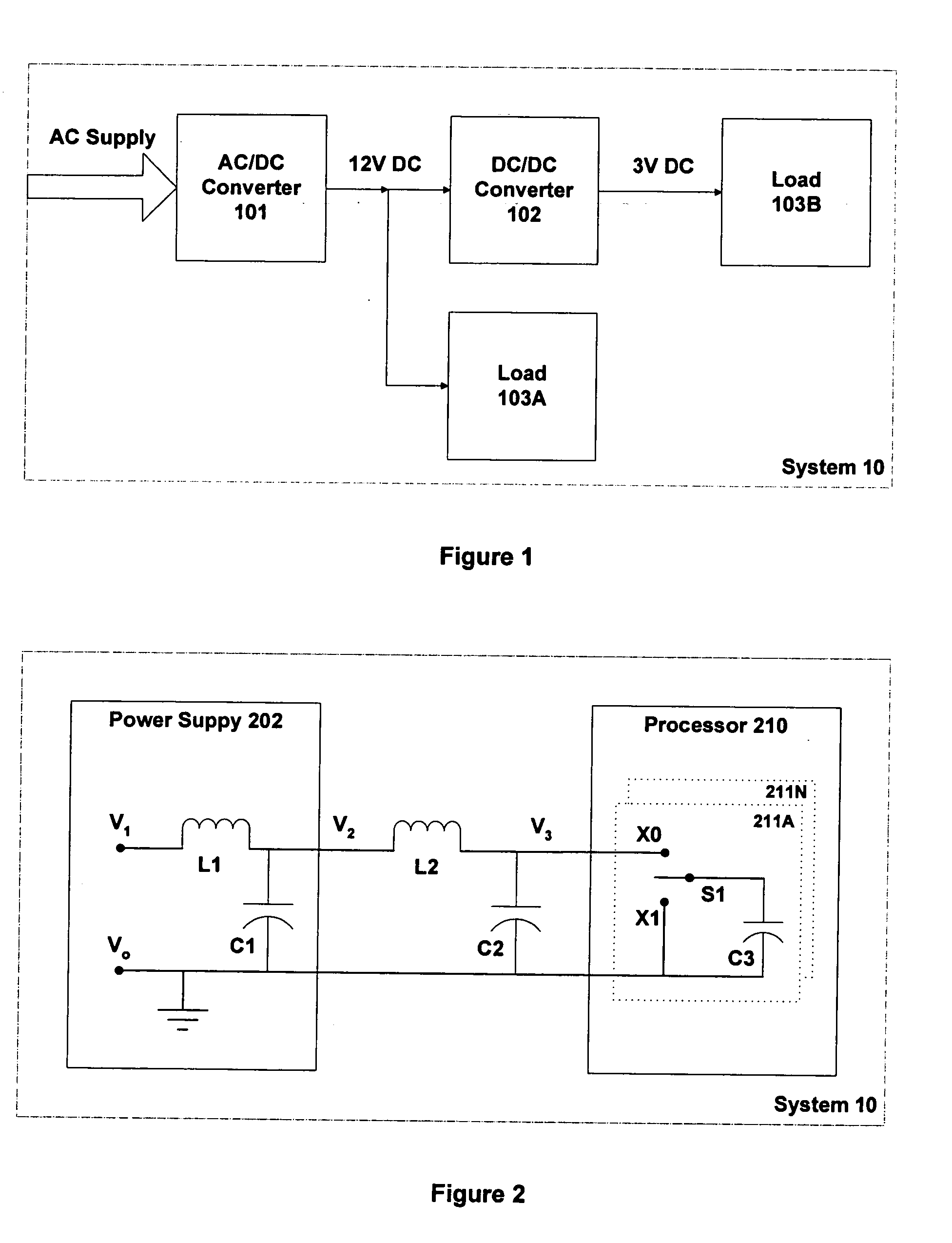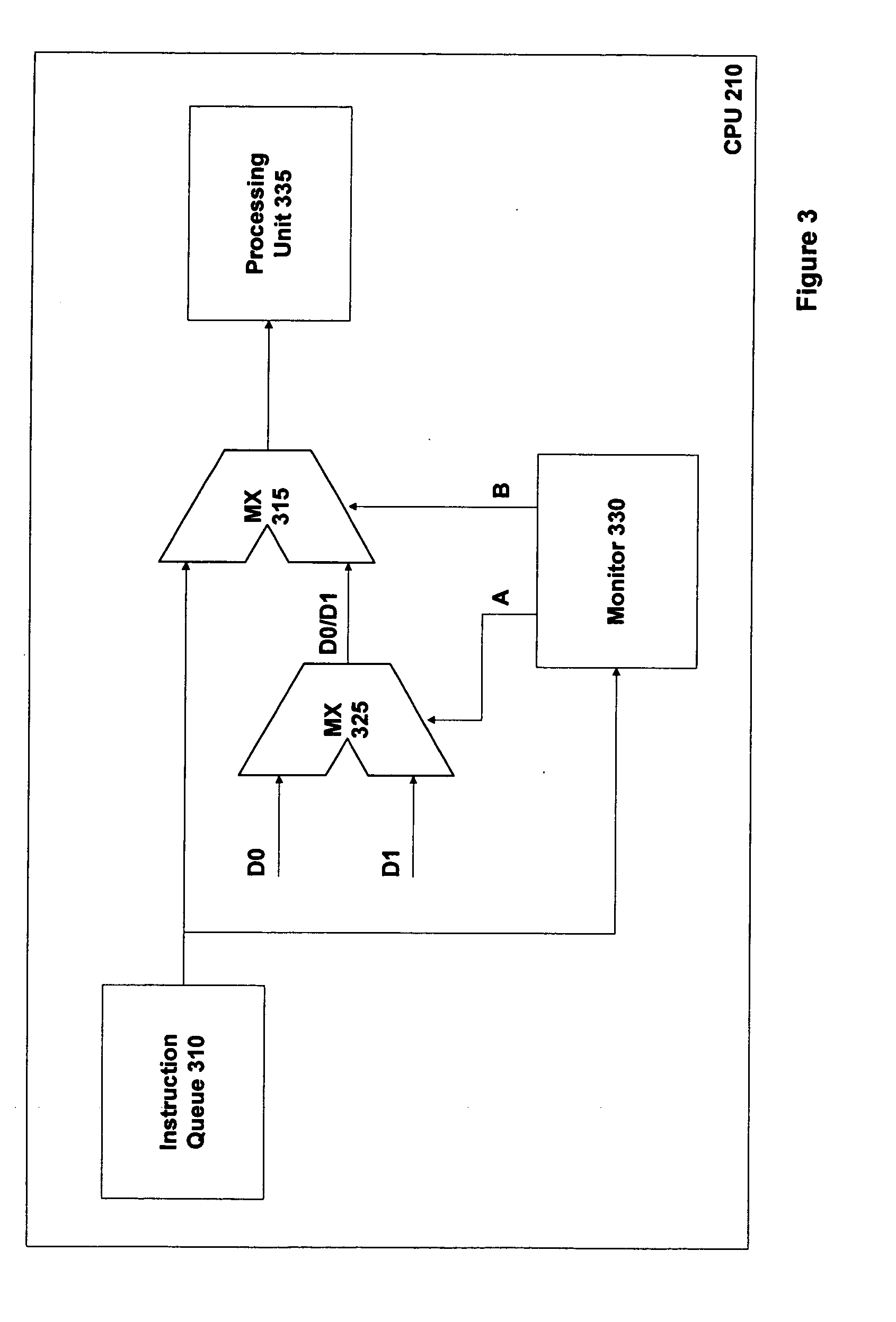Method and apparatus for controlling the power consumption of a semiconductor device
a technology of semiconductor devices and power consumption, applied in the direction of program control, liquid/fluent solid measurement, instruments, etc., can solve the problems of relatively low consumption of power, inability to achieve significant delay, and inserting instructions that consume relatively high power, so as to achieve less stringent specifications and reduce costs.
- Summary
- Abstract
- Description
- Claims
- Application Information
AI Technical Summary
Benefits of technology
Problems solved by technology
Method used
Image
Examples
Embodiment Construction
FIG. 3 illustrates a CPU 210 in accordance with one embodiment of the present invention. CPU 210 can typically be incorporated into system 10, such as shown in FIG. 1 or FIG. 2. Note that FIG. 3 only shows those components relevant to an understanding of power supply regulation in CPU 210, since the skilled person is already very familiar with the various other components in a typical CPU.
Instructions for execution by CPU 210 are received into instruction queue 310, where they are stored pending supply to the processing unit 335. The processing unit is responsible for actual execution of the instructions. If the processor is idling, the instruction queue may be temporarily halted or empty (the latter case can be regarded as having a sequence of null instructions in the instruction queue).
Also connected to the output of instruction queue 310 is a monitor 330, while interposed between the instruction queue 310 and processing unit 335 is a multiplexer 315. Thus instructions output f...
PUM
 Login to View More
Login to View More Abstract
Description
Claims
Application Information
 Login to View More
Login to View More - R&D
- Intellectual Property
- Life Sciences
- Materials
- Tech Scout
- Unparalleled Data Quality
- Higher Quality Content
- 60% Fewer Hallucinations
Browse by: Latest US Patents, China's latest patents, Technical Efficacy Thesaurus, Application Domain, Technology Topic, Popular Technical Reports.
© 2025 PatSnap. All rights reserved.Legal|Privacy policy|Modern Slavery Act Transparency Statement|Sitemap|About US| Contact US: help@patsnap.com



